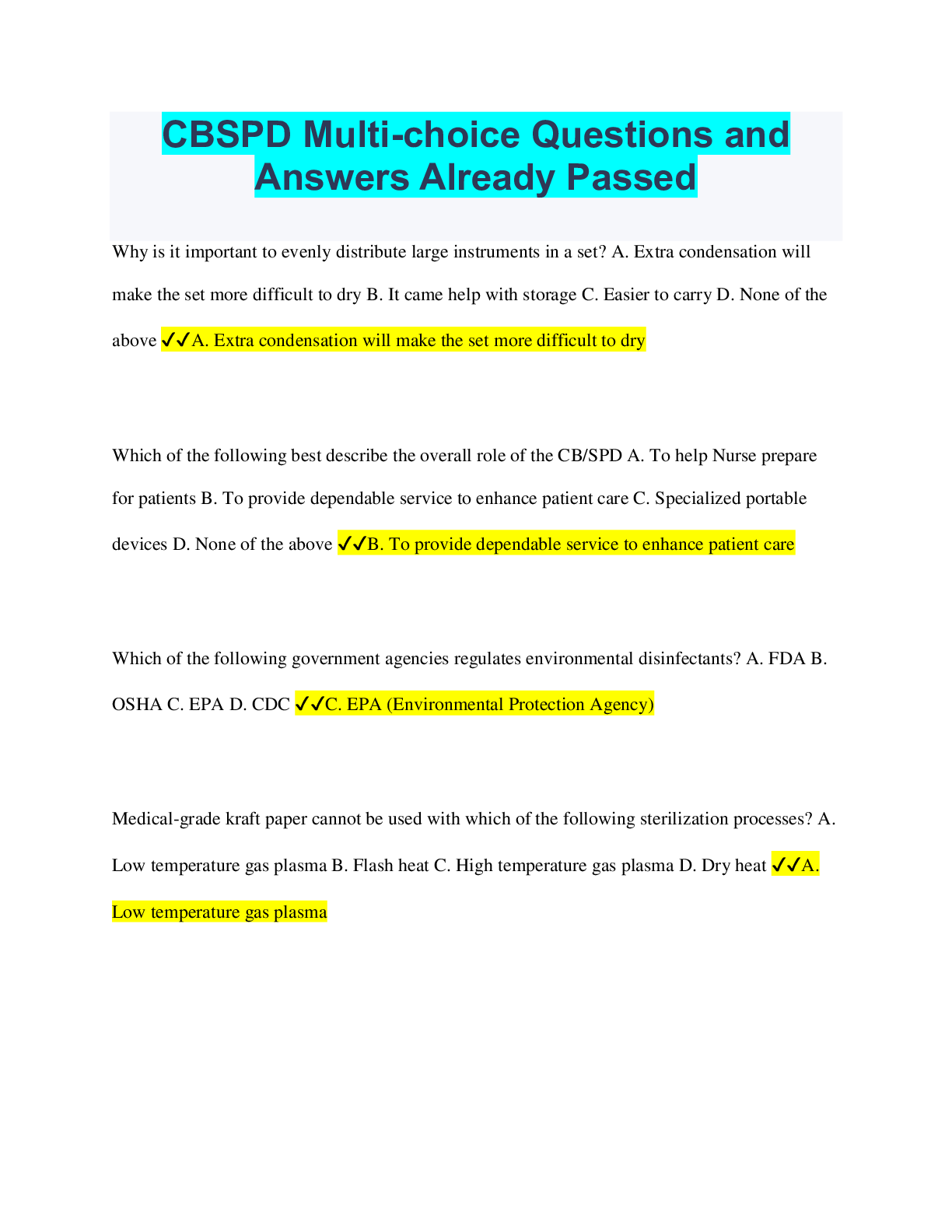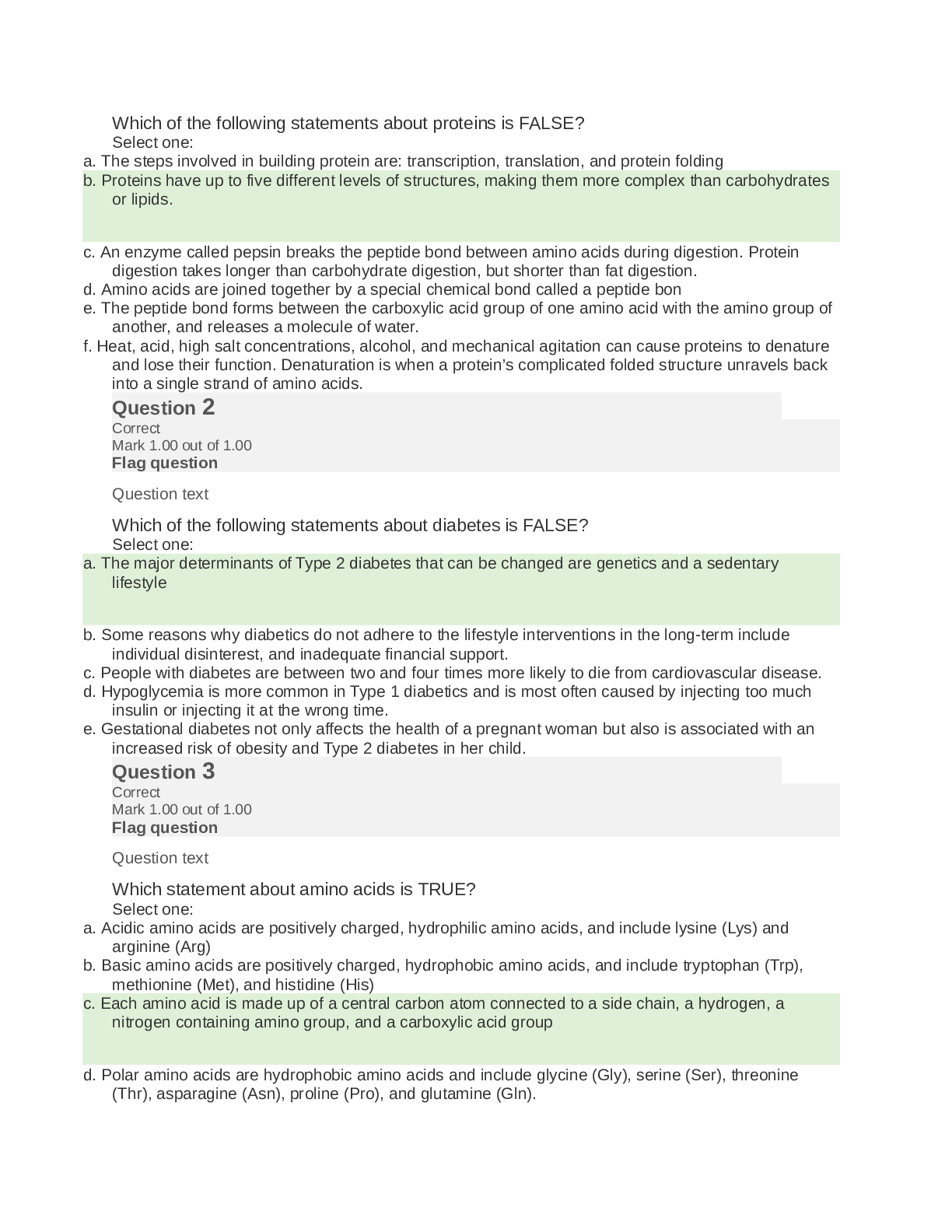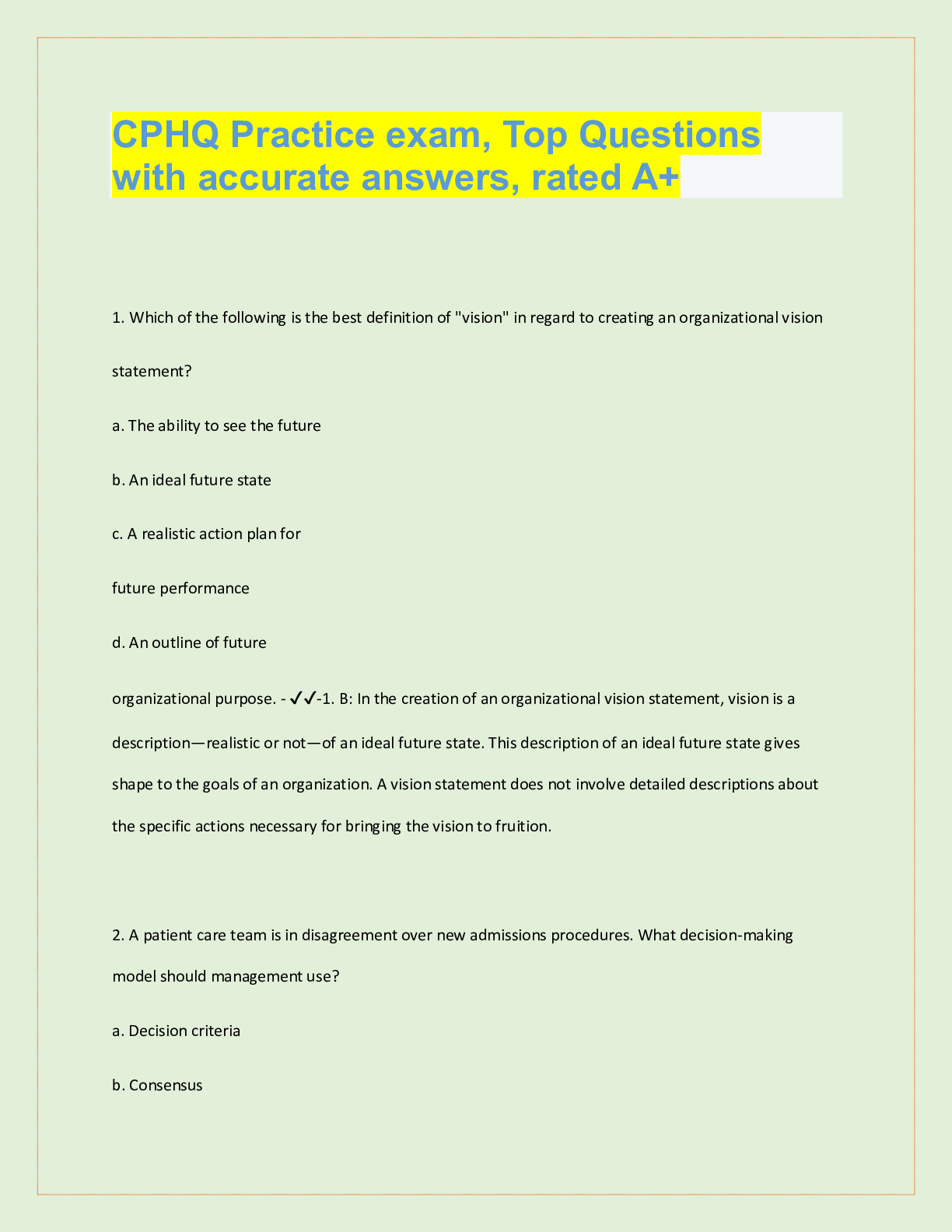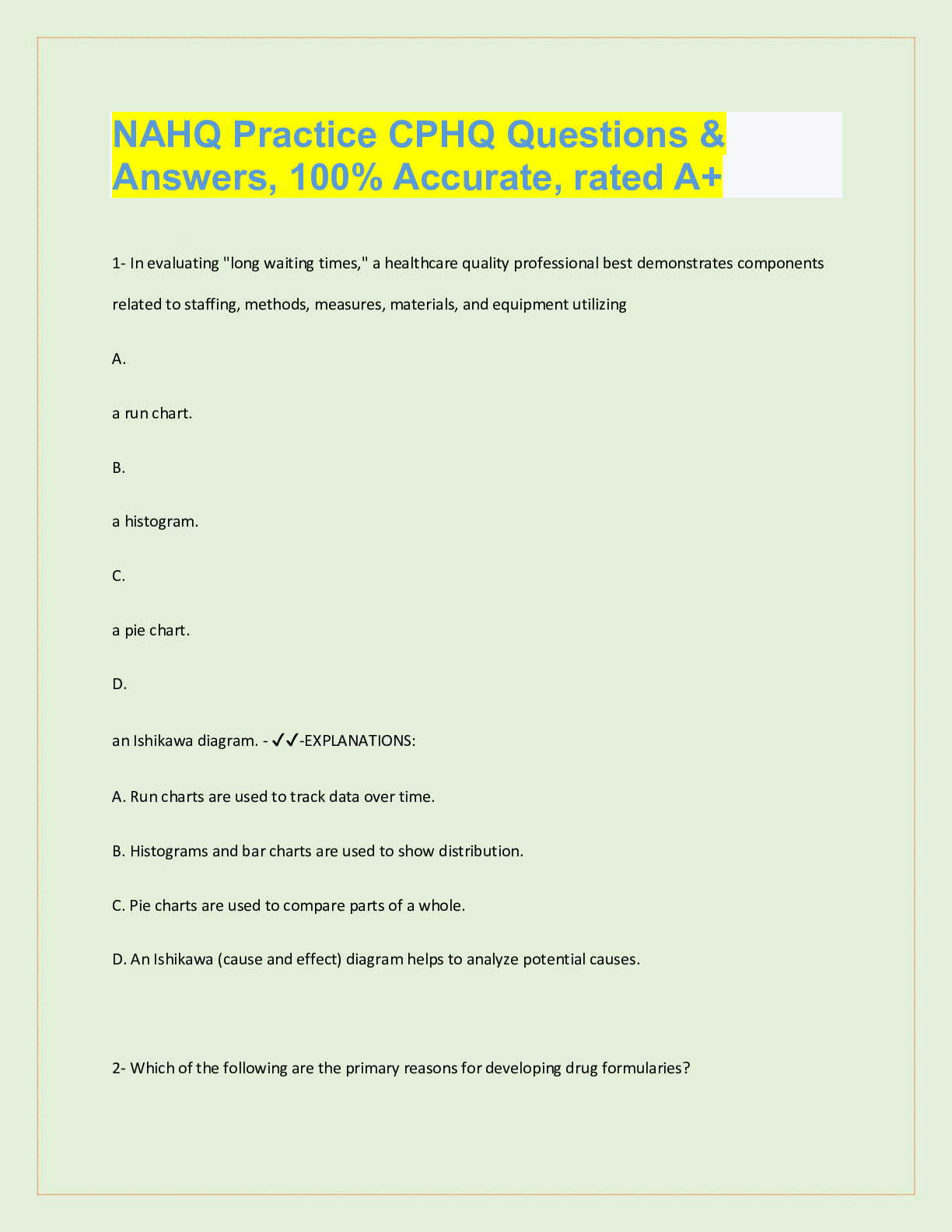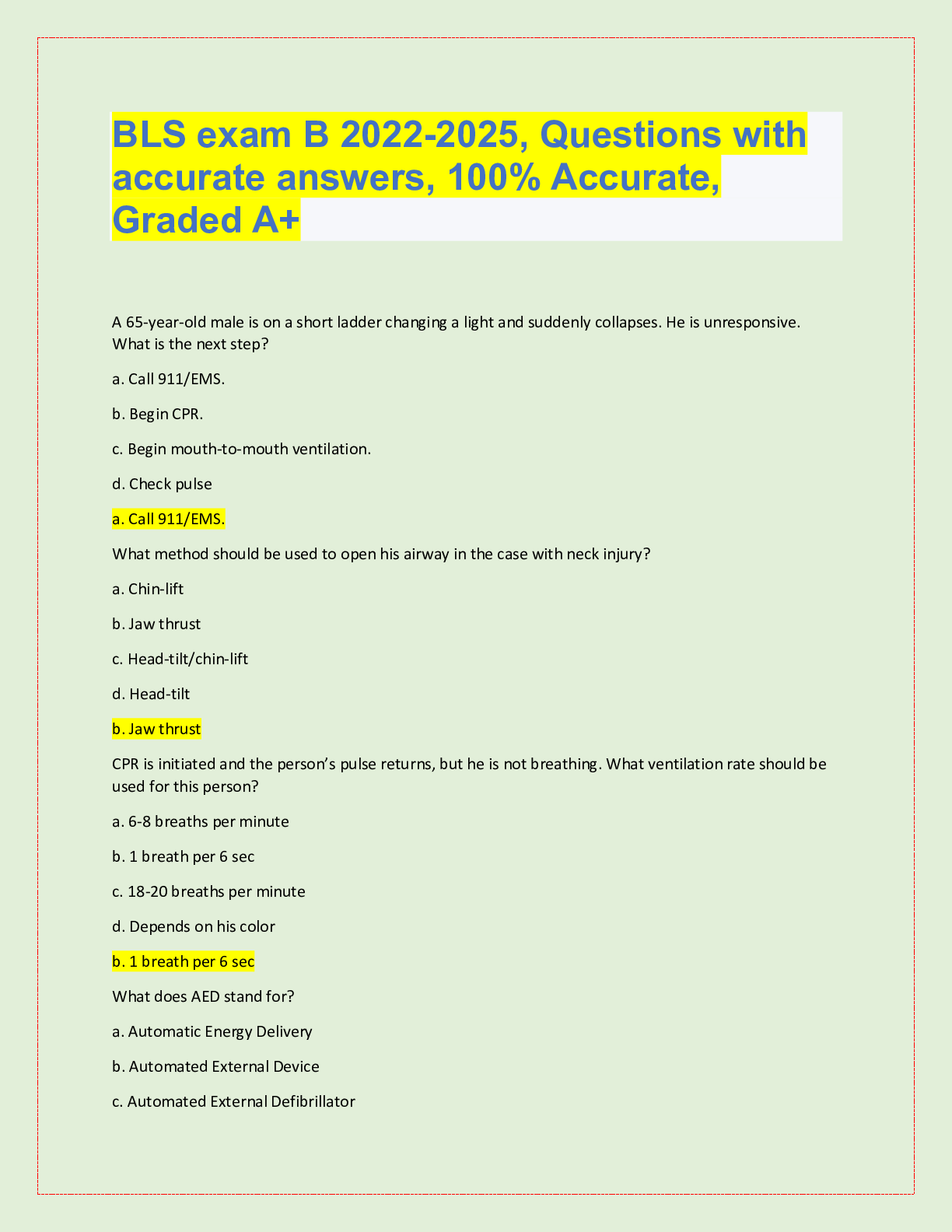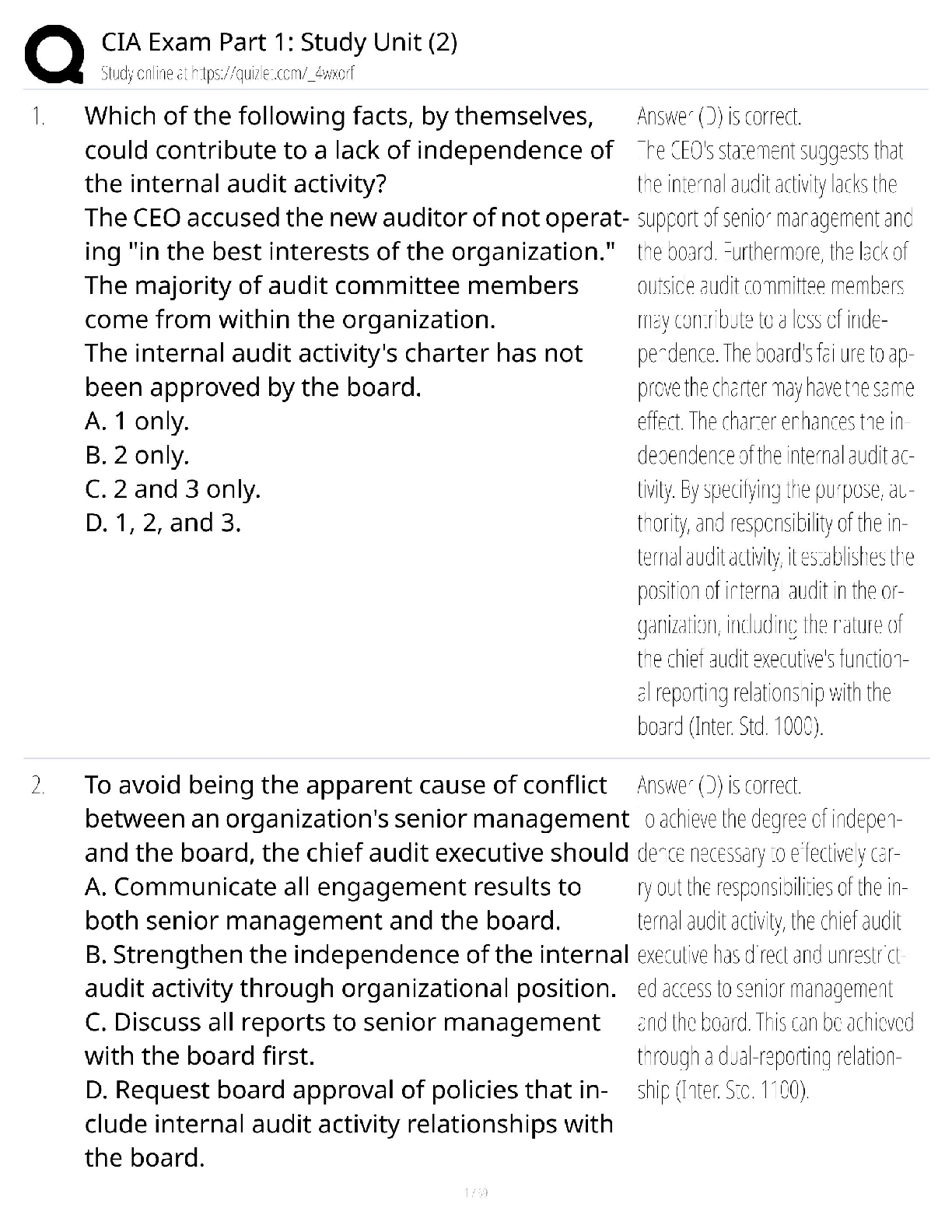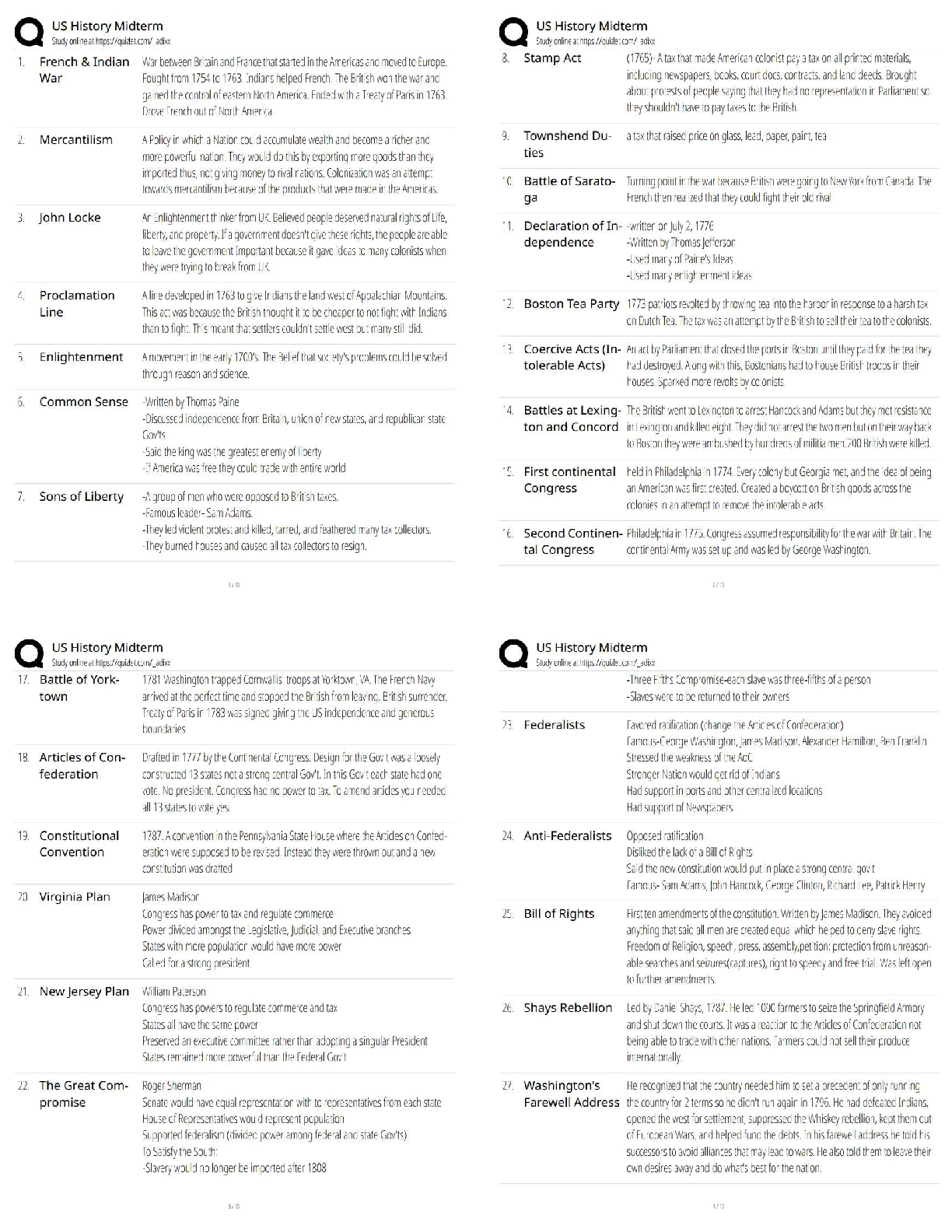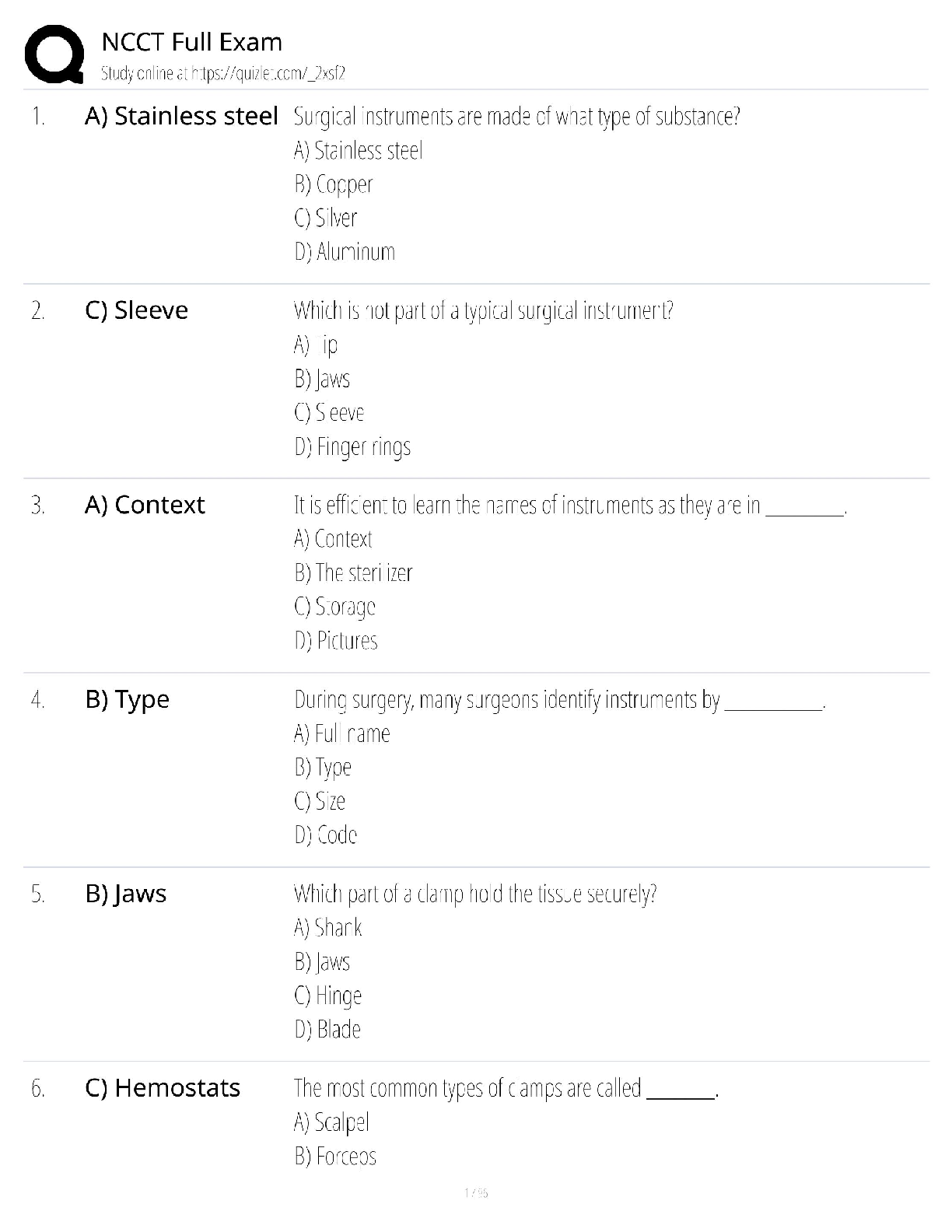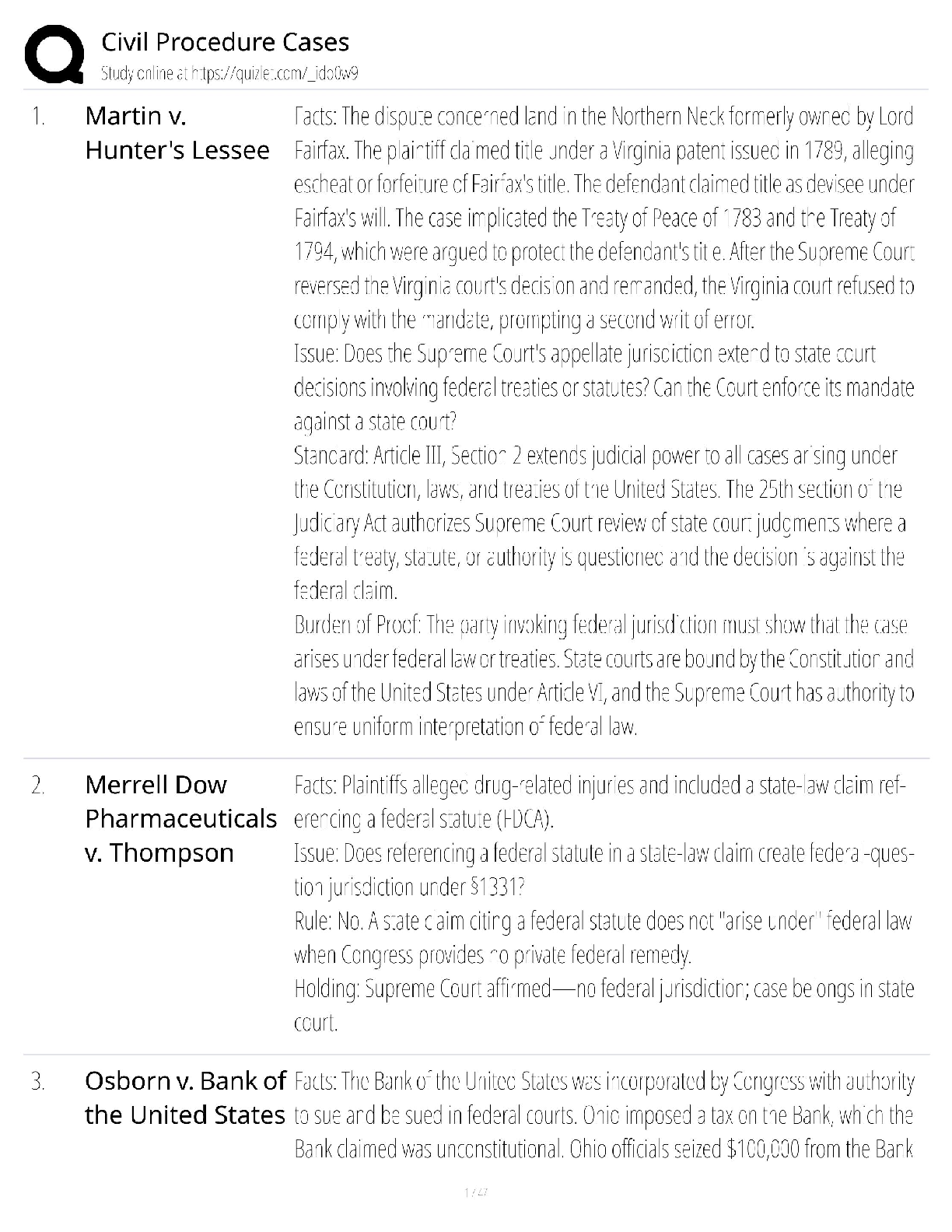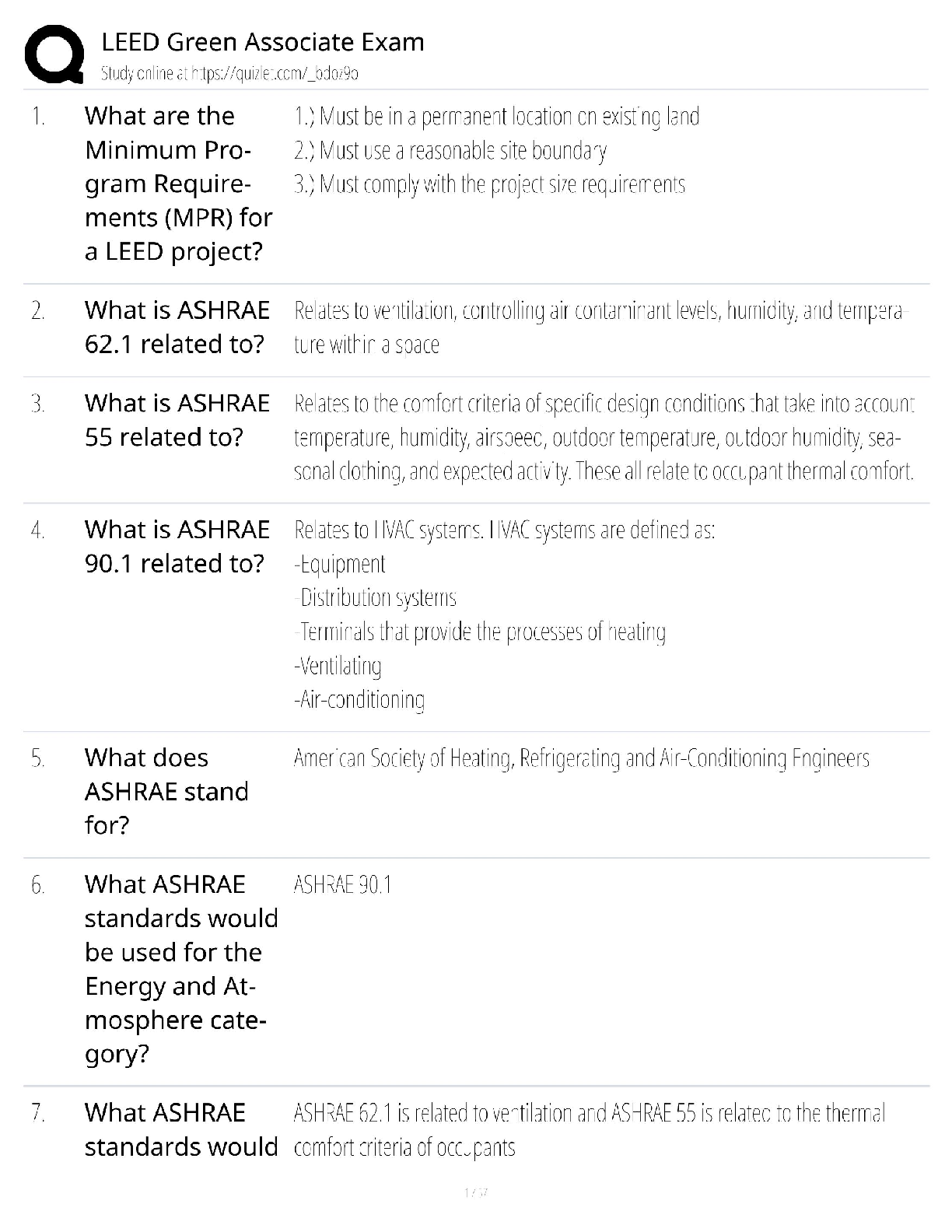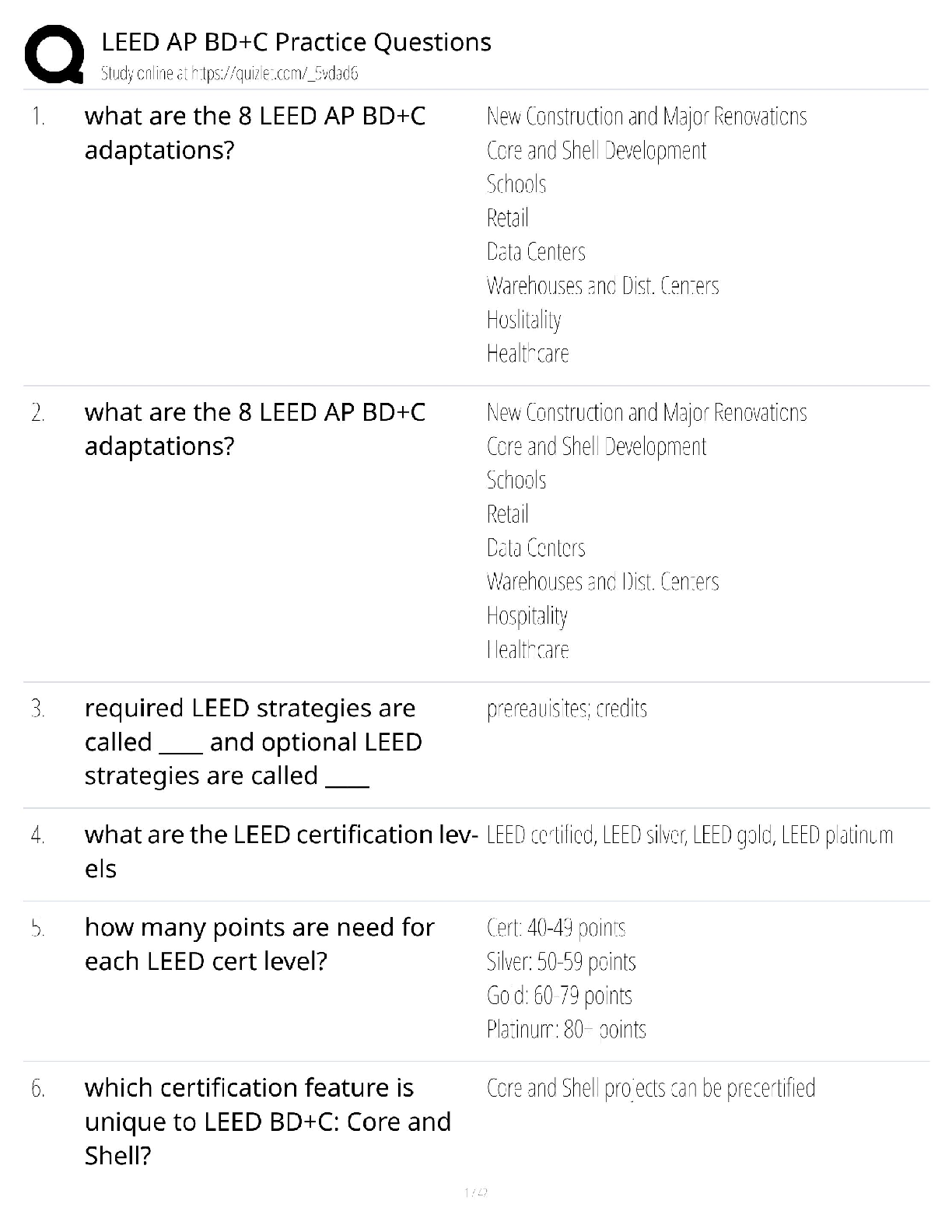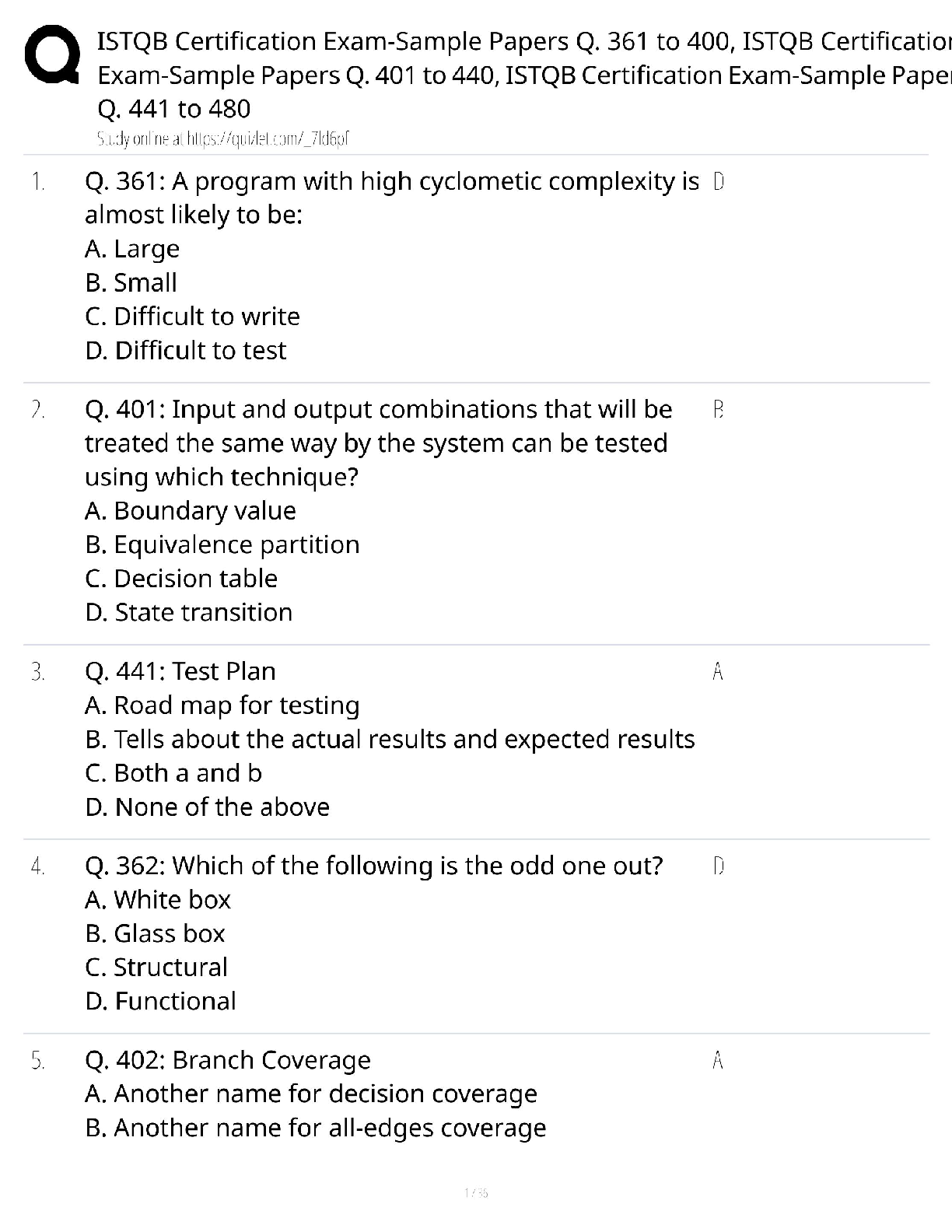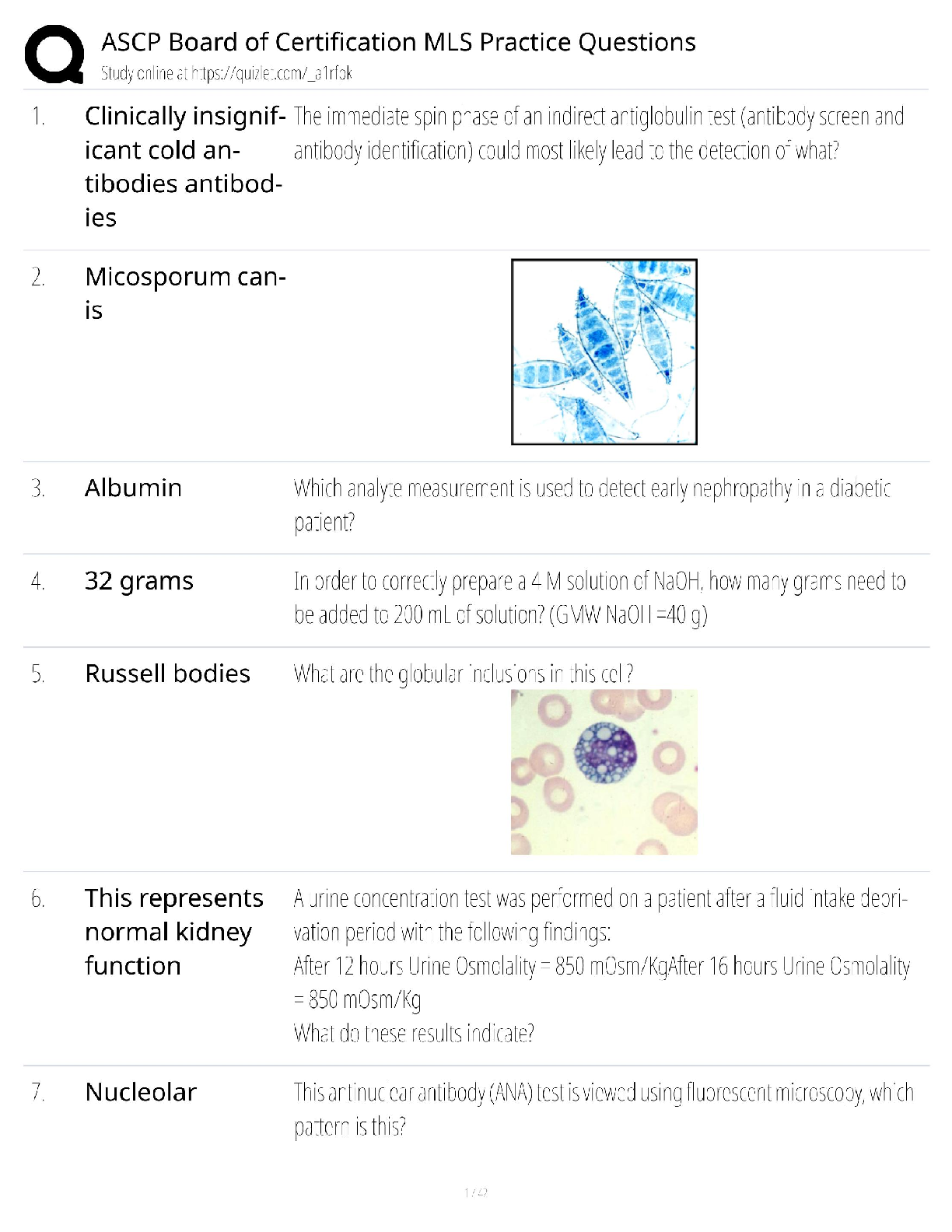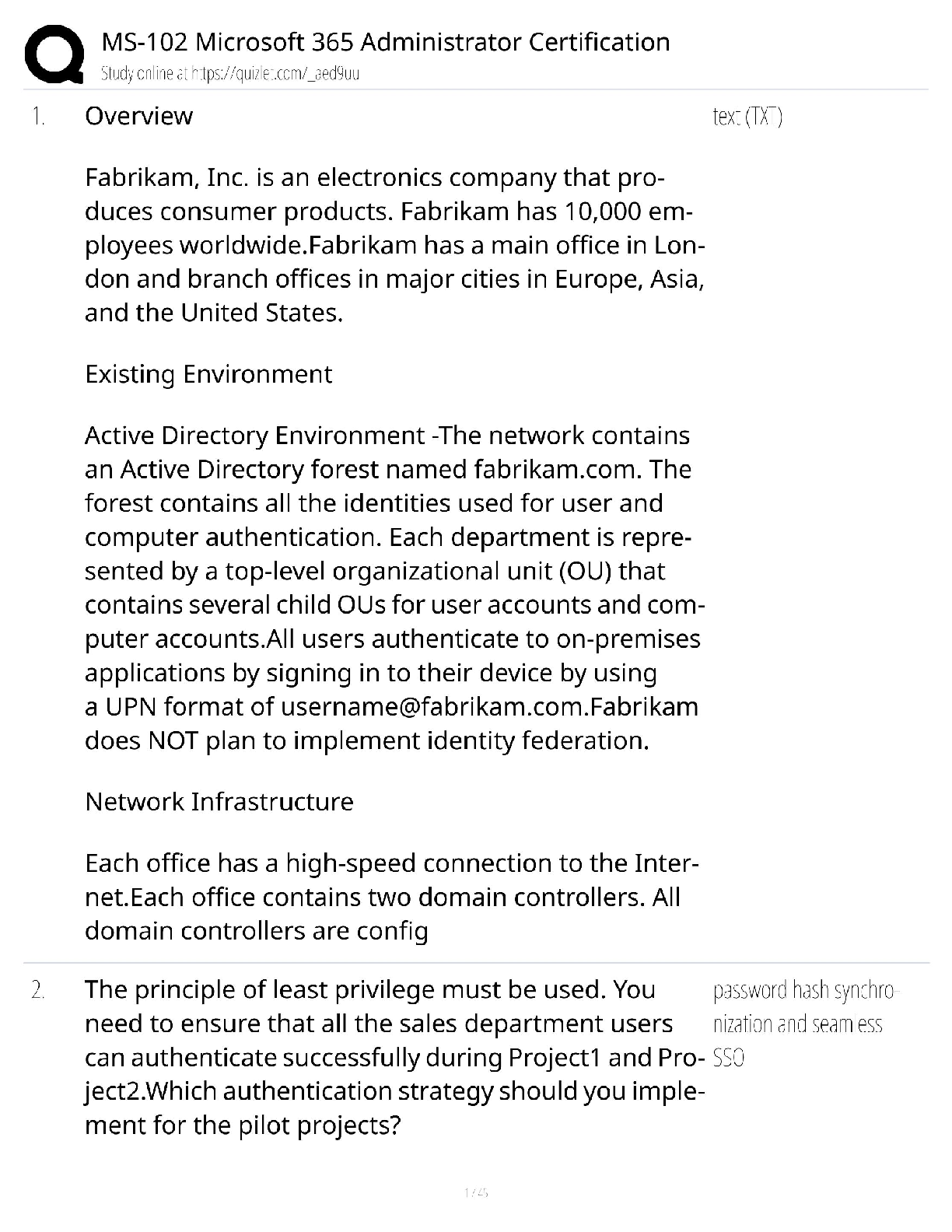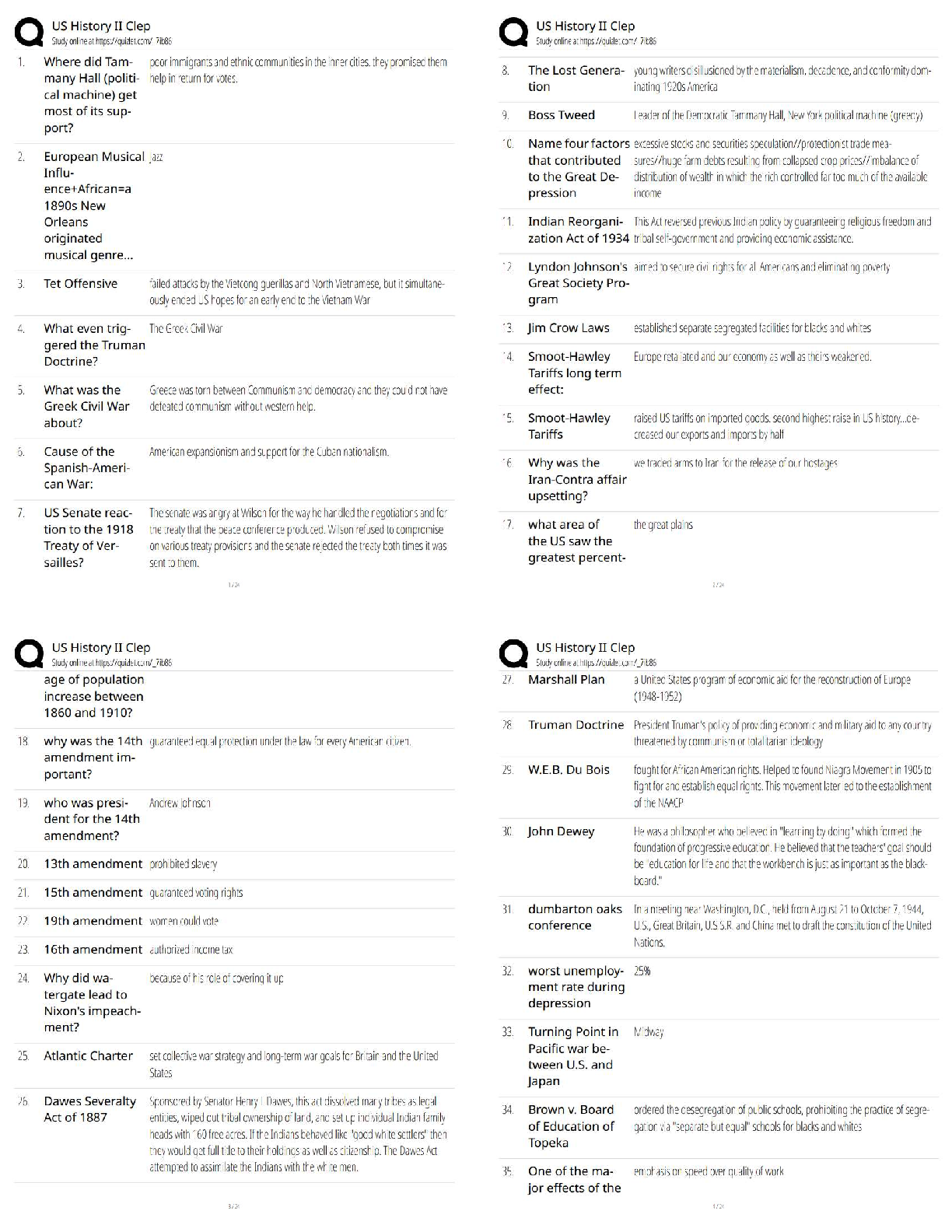CPHQ Practice exam, Top Questions with accurate answers, rated A+
Document Content and Description Below
CPHQ Practice exam, Top Questions
with accurate answers, rated A+
1. Which of the following is the best definition of "vision" in regard to creating an organizational vision
statement?
a. The abi
...
lity to see the future
b. An ideal future state
c. A realistic action plan for
future performance
d. An outline of future
organizational purpose. - ✔✔-1. B: In the creation of an organizational vision statement, vision is a
description—realistic or not—of an ideal future state. This description of an ideal future state gives
shape to the goals of an organization. A vision statement does not involve detailed descriptions about
the specific actions necessary for bringing the vision to fruition.
2. A patient care team is in disagreement over new admissions procedures. What decision-making
model should management use?
a. Decision criteria
b. Consensus
c. Invocation
d. Tenure influence. - ✔✔-2. A: Decision criteria is a decision-making model that explores all options
equally
and gives unorthodox or unpopular options a fair chance, even when they are under
dispute. Consensus is not the best choice because this approach often reduces
decisions to options that everyone likes and discounts the unorthodox or unpopular options that could
be appropriate and viable.
3. St. Josephʼs Hospital was recently ranked last in the region in the area of efficiency in transferring
patients to inpatient beds. When working on process improvements,
what type of data is likely to prove most helpful?
a. Internal data
b. Historical data
c. Quality control data
d. Comparative data. - ✔✔-3. D: Comparative data would prove most helpful in improving the processes
at St.
Josephʼs Hospital. By comparing their data and processes with those of higher
ranked medical facilities, process improvement solutions could be derived. A and B are incorrect
because internal data, whether historical or contemporary, will not help identify the reasons for the last
place ranking and will not help improve processes. C is wrong because quality control data is another
internal measure that will only compare the
existing processes with established internal standards.
4. Which of the following is a structure designed to help
facilitate team or group pursuit of specific goals and objectives?
a. Management
b. Organization
c. Intelligent design
d. Delegation. - ✔✔-4. B: An organization is a structure that is designed to bring a group together for the
pursuit of specific goals and objectives. While management and delegation are
both important, they are not central to the unification of a team or group for goal
pursuit. They are aspects of the structure, but not the structure itself.
5. Mrs. Jones waits more than an hour past her scheduled appointment time. She finally
leaves in a huff, calling the doctorʼs office a joke and saying she has better things to do. Mrs. Jonesʼ
perception of quality in this instance is based on...
a. Medical care.
b. Statistical anomalies.
c. Provider norms.
d. Patient care. - ✔✔-5. D: Mrs. Jonesʼ evaluation of
the medical office was based
entirely on her patient
care experience, not the
actual quality of the office or
staff.
6. If managers fail to make
organizational decisions
consciously, what generally
serves
as the basis for outcomes?
a. Circumstances
b. Organizational policy
c. Statistical norms
d. Federal regulations. - ✔✔-6. A: When managers do not make conscious organizational decisions,
those decisions
are made by default according to circumstances. Decision making becomes
reactive instead of pro-active, and more and more resources are devoted to managing current problems
which could have been prevented, instead of planning for the future. This can lead to the beginning of a
negative feedback loop which can be very destructive to an organization.
7. During a surgical procedure, a small medical implement was left inside a patient. The follow-up
surgery to remove the implement is an example of...
a. Quality improvement.
b. Quality control.
c. Quality assurance.
d. Total quality.. - ✔✔-7. C: Quality assurance is a focus on outputs or quality after
the point of production, including any corrective actions necessary to optimize
post-production quality, as in the surgery performed to remove the implement left in the
patient. A, B, and D are incorrect because they refer to quality processes that
take place on different levels and are not corrective in the way that quality assurance is.
8. Which of the following statements about quality in healthcare is true?
a. Quality is a conglomerate
of lessons, methods, and
knowledge.
b. Quality directly correlates
to patient safety.
c. Quality is multifaceted and
multidimensional in nature.
d. All of the above - ✔✔-8. D: All of the statements
presented in A, B, and C are true
statements about quality
in healthcare.
9. Which of the following is
not considered a principle of total
quality?
a. Competent management
b. Customer focus
c. Continuous improvement
d. Teamwork. - ✔✔-9. A: Competent management
is not considered a principle of
total quality. Customer
focus, continuous
improvement, and teamwork are
the three principles of total
quality.
10. Healthcare organizations are often classified as systems. What is the primary reason for this
designation?
a. They span several states with a network of providers.
b. They are dynamically complex and have multiple levels
of management.
c. They are a collection of parts that function as an
interdependent whole.
d. They employ a broad cross-section of the population in
various positions.. - ✔✔-10. C: Healthcare
organizations are often classified
as systems because they are a
collection of parts that
function as an interdependent
whole
11. Mary has a family history of heart disease and type II diabetes. She also has pre-hypertension.
Maryʼs doctor recently put her on a diet and exercise program. This
is an example of system thinking called...
a. Quality control.
b. Preemptive medicine.
c. Continuous improvement.
d. History dependency.. - ✔✔-11. B: System thinking that
prescribes preventative actions
to help prevent an impending
problem is called
preemptive medicine
12. How does the World Health Organization Surgical Safety Checklist lead to tight
coupling in the operating room?
a. It establishes universality for patients.
b. It compartmentalizes the procedures.
c. It establishes a clear operating room hierarchy.
d. It closely aligns the various individuals involved in the process.. - ✔✔-12. D: The World Health
Organization Surgical Safety
Checklist leads to tight coupling
in the operating room by
closely aligning the various
individuals involved in the
surgical process.
13. Who created the hospital
information management
standard that states, "The
hospital
maintains the security and
integrity of health information?"
a. The Baldrige Committee
b. The Joint Commission
c. The National Institutes of
Health
d. The ORYX Initiative. - ✔✔-13. B: The Joint Commission
set the standard that hospitals
are responsible for health
information security and
integrity.
14. The rate of sick days among employees in the intensive care unit (ICU) falls well within the hospital
standard, but the CNAs claim the RNs take too many sick days,
and this prevents consistent care relationships between RNs and CNAs. What should
management do to investigate this situation?
a. Set up surveillance of the
department
b. Distribute patient surveys
throughout the ICU
c. Distribute employee
surveys throughout the ICU
d. Unbundle/disaggregate the
data and reanalyze it. - ✔✔-14. D: The best way to
understand exactly what is
happening in the intensive care
unit (ICU) is to unbundle or
disaggregate the data and
analyze it again, looking for
specific challenges with RN
sick days.
15. The new administrator of Hospital A implements a top down hand washing policy for all employees
and visitors to the hospital. As a result, previously high infection rates drop below national standard
levels for the first time. This new policy is an example of...
a. Performance measures.
b. Quality assurance.
c. Risk management.
d. Information management. - ✔✔-15. C: Risk management is
defined as taking steps to avoid
and control risks within
an environment to
accomplish a desired outcome,
and the hand washing policy
helps
manage the risk of infection.
16. The Baldrige Performance Excellence Program Health Care Criteria remark on the importance of
measurement and analysis of data. What can be the downside of a heavy performance data focus?
a. Managers can get tunnel vision and overlook nonme
assured errors and issues.
b. Data far above the national standard can result in inflated self-opinion.
c. Data far below the national standard can result in depression and despondency.
d. Hospitals with high data scores are held to impossibly high standards.. - ✔✔-16. A: The downside of a
heavy data focus can be tunnel
vision by managers, which
can lead to oversight of
non-measured errors.
17. A position has recently opened for a department head in human resources (HR). It is your job to
select the best internal candidate to interview for the position.
Which of the following candidates possesses the strongest leadership potential?
a. An HR supervisor who has been with the organization for 10 years.
b. An accounting supervisor who has a perfect quality record.
c. An HR employee who mentors new hires and frequently attends voluntary training.
d. A supervisor in the maintenance department who wants to try something new.. - ✔✔-17. C: An
employee with experience in the field who has emotional intelligence
(demonstrated by mentoring new hires) and a quest for new knowledge shows
excellent leadership potential.
18. In a large hospital setting,
which of the following represents
an internal customer?
a. An admitted patient
b. A physical therapy
department assistant
c. A medical equipment
supplier
d. A patientʼs family. - ✔✔-18. B: A physical therapy
department assistant is an
internal customer because he
or she works within the
organizational structure. The
other choices all represent
external customers.
19. Who should be considered
when developing process
requirements within a healthcare
organization?
a. Patients
b. Internal customers
c. Stakeholders
d. All of the above. - ✔✔-19. D: Patients, internal
customers, and stakeholders
should all be considered when
developing process
requirements within a healthcare
organization.
20. What happens right after a Joint Commission-accredited hospital experiences a
sentinel event?
a. An award is presented to
administrators.
b. A root cause analysis is
performed.
c. Immediate re-accreditation
is granted.
d. Performance improvement
measures are implemented.. - ✔✔-20. B: When a Joint
Commission-accredited hospital
experiences a sentinel event, a
root cause analysis is
performed
21. A small city has two hospitals. The Hospital Consumer Assessment of Healthcare
Healthcare Providers and Systems (HCAHPS) reports show Hospital A is performing far below Hospital B
in customer service. The administrators at Hospital A decide to set an organizational goal of ranking
higher than Hospital B in customer service in one year. What is the most logical first step in the goal�setting process?
a. Develop an overall picture of the partial goals to be achieved.
b. Identify a specific and singular goal to be initially pursued.
c. Require immediate training for all members of each department.
d. Bring in customer service experts to evaluate and improve processes.. - ✔✔-21. A: When undertaking
a goal-setting process, the best
first step is to develop an overall picture of the
smaller partial goals to be achieved. B is wrong because
it disregards the overall goal for the sake of a single smaller
goal. C and D are incorrect because they are
reactive steps, not proactive steps.
22. The process improvement team has recently established a goal that all patients
be triaged within 20 minutes of arrival in the emergency room (ER). What might be
a negative outcome of this goal?
a. ER nurses will be overstressed.
b. Mistakes are likely to be made.
c. Triage will be less thorough.
d. All of the above - ✔✔-22. D: If a strict time limit is
established, all of these will occur
- ER nurses
will be overstressed,
mistakes are likely to be made,
and triage will be less thorough
23. Which of the following can be defined as, "A set of measures
and data that give managers and administrators a quick yet
comprehensive overview of performance?"
a. Process measurement
b. Balanced scorecard
c. Dashboard
d. Six Sigma. - ✔✔-23. B: A balanced scorecard is a set of data that give a quick and comprehensive
overview of performance. Process measurement is lengthy and generally focused on a single process
area, not quick and all encompassing. Dashboard scoring is not as quick or comprehensive as a balanced
scorecard. Six Sigma deals with quality measurement, not performance data.
24. Within the last four days, three post-surgical patients have died of pneumonia complications at a
large hospital. None of the patients presented as symptomatic for pneumonia at the time of surgery.
What evaluation tool should be used to help identify
and resolve this issue?
a. Epidemiological theory
b. Performance management measures
c. Statistical analysis
d. Improvement measures. - ✔✔-24. A: Epidemiological theory
is used to identify the source and
cause of an issue
or anomaly, which is perfect
for the surgical complications
represented in this question
25. What is the primary purpose of the Consumer Assessment of Health Providers and
Systems (CAHPS)?
a. To relieve data collection efforts by administrators
b. To offer patients an anonymous outlet for healthcare complaints
c. To capture patient satisfaction data in a universal manner
d. To provide a forum for more effective communication between
patients and providers. - ✔✔-25. C: The primary purpose of the Consumer Assessment of
Health Providers and Systems (CAHPS) is to capture patient satisfaction data in a universal way that can
be compared among all hospitals. A, B, and D represent secondary or tertiary purposes of CAHPS; they
do not represent its primary purpose.
26. When Hospital Aʼs neonatal infection rates rise unexpectedly, the quality council
establishes a new set of performance measures. They base their measures on internal
standards, customer survey data, and employee survey data. What important element
are the quality council members disregarding?
a. Epidemiological standards
b. Customer satisfaction data
c. Employment records
d. External standards. - ✔✔-26. D: It is vital that quality
council members take external
standards (such as national
goals and requirements)
into account when addressing
the rising infection rates.
27. What challenge often occurs with the use of
aggregated data?
a. The numbers become too large
to comprehend.
b. Context is lost and
solutions are not identified.
c. Impersonality and
vagueness are not engaging.
d. Special interpreters are
needed for understanding.. - ✔✔-27. B: When data are
aggregated, one of the biggest
challenges is the loss of context,
which makes specific
solutions hard to identify
28. As a quality professional, you are about to address administrators regarding a recent decrease in
customer satisfaction with postpartum care. In preparation, you want to create a report to present at
the meeting. Which of the following would be most important to consider as you prepare your report?
a. Properly formatting the report to industry standards
b. Identifying the data most relevant to the situation
c. Expounding on historical data on postpartum care
d. Reviewing postpartum satisfaction at other organizations. - ✔✔-28. B: When preparing the report on
postpartum care to be presented to administrators,
the most important goal is identifying which data are most relevant to the situation. A, C, and D are
incorrect because while they may offer some items of interest, they do not best help you describe the
situation at hand to the administration.
29. Which of the following is a
good way to assess customer
needs and expectations?
a. Surveys
b. Focus groups
c. Informal discussions
d. All of the above. - ✔✔-29. D: Surveys, focus groups,
and informal discussions are all
excellent ways to assess
customer needs and
expectations.
30. Which of the following is the most important way that transparency of healthcare
data serves as a regulator for the industry?
a. It encourages performance improvement to create more positive data.
b. It tends to drive poorly p
[Show More]
Last updated: 2 years ago
Preview 1 out of 82 pages
